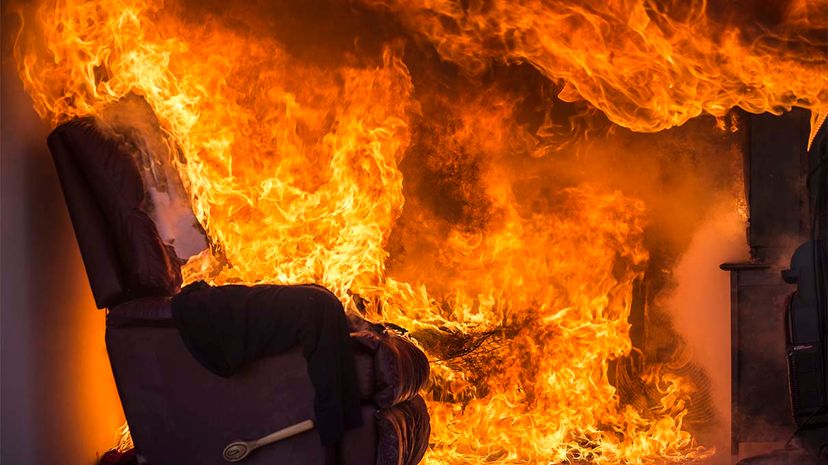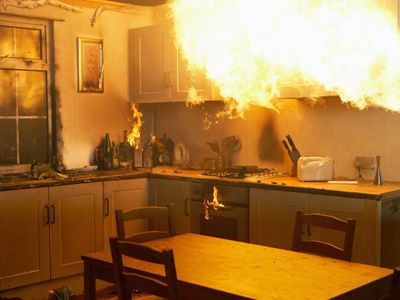
A small flame can turn into a raging house fire in just a few seconds, largely because of the flammable, synthetic materials in home furnishings and wall coverings.
"Today, with the prevalence of synthetic materials in the home, occupants have roughly 2 to 3 minutes to get out," Consumer Safety Director John Drengenberg of Underwriters Laboratories (UL) told This Old House.
Advertisement
Now, however, researchers in China have developed a new, nontoxic "smart" wallpaper that won't burn — and that triggers an alarm when it reaches a certain temperature threshold. The project was led by Ying-Jie Zhu for the Shanghai Institute of Ceramics at the Chinese Academy of Sciences and the details were published in the March 13, 2018, issue of ACS Nano.
After constructing a mesh of nanowires about the thickness of a sheet of printer paper, the researchers added glass fibers for fire resistance, then put the woven material through a paper-making machine to create a smooth, flexible wallcovering.
The nanowire fibers are then linked to a mixture of graphene oxide and water that have been made into an ink and printed on the backside of the wallcovering. The graphene oxide is key to the wallcovering's ability to detect heat. If the temperature reaches more than 264 degrees Fahrenheit (129 degrees Celsius), the graphene oxide begins to conduct electricity, enabling the material to signal a connected fire alarm and warning light.
To enable the fire-sensitive ink to survive high heat long enough to sound the alarm, it is coated with a protective chemical called polydopamine. This coating allows the ink to survive fires for up to 5 minutes before breaking down.
This new breed of nano-infused wallpaper may someday replace regular wallcoverings that are made of cellulose, a natural material derived from plant fibers, which is flammable. However, say critics, making the paper isn't cheap and researchers will need to determine how to produce the material at a cost that's attractive to consumers. During the fire-sensitive wallcovering's development, Zhu's team made enough of the nano-material to cover one wall (about 54 square feet, or 5 square meters). No word yet on when smart wallcoverings will be brought to market, but the benefit could be "saving human lives and reducing the loss of property in a fire," Zhu told Science News for Students.
Advertisement

